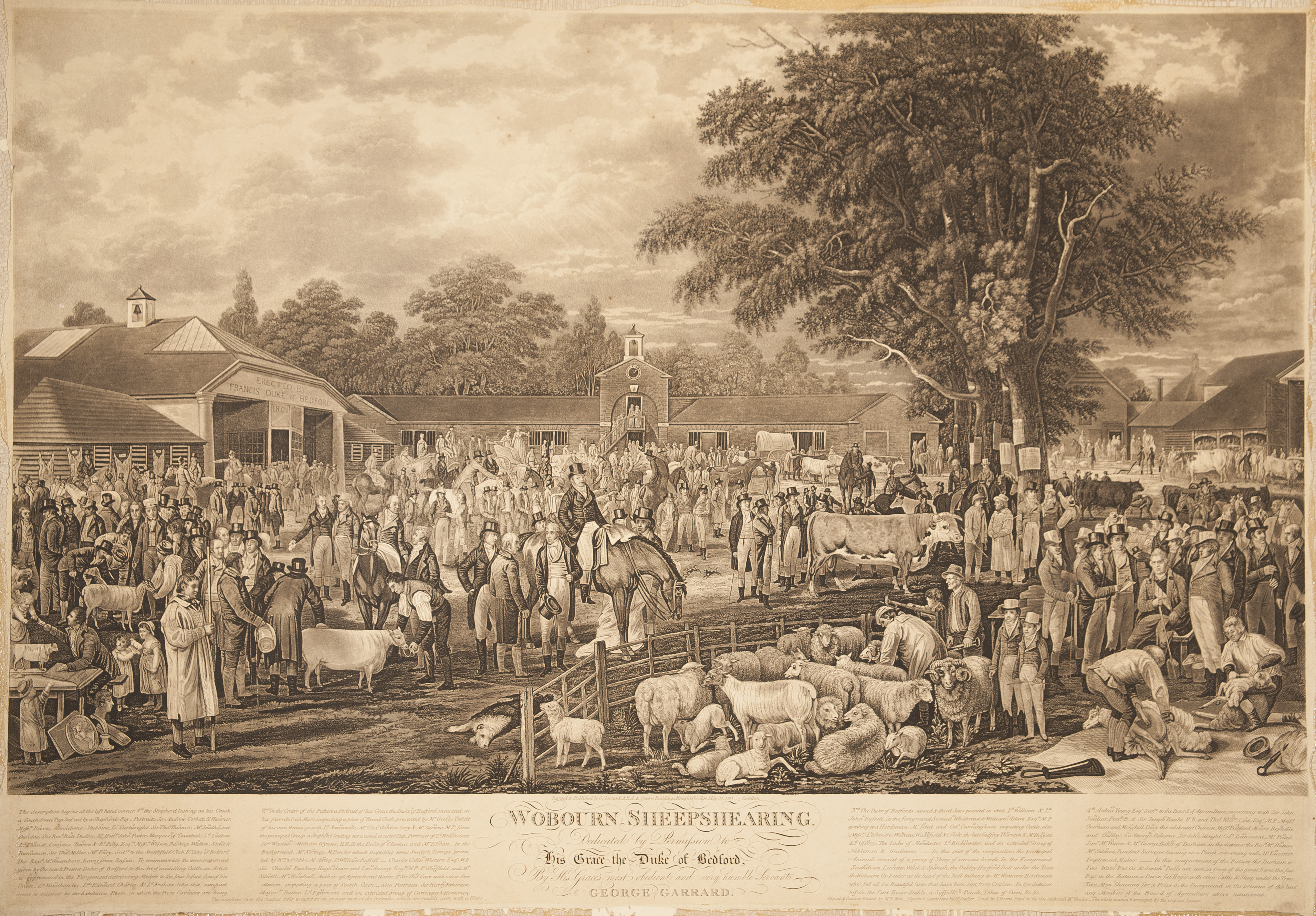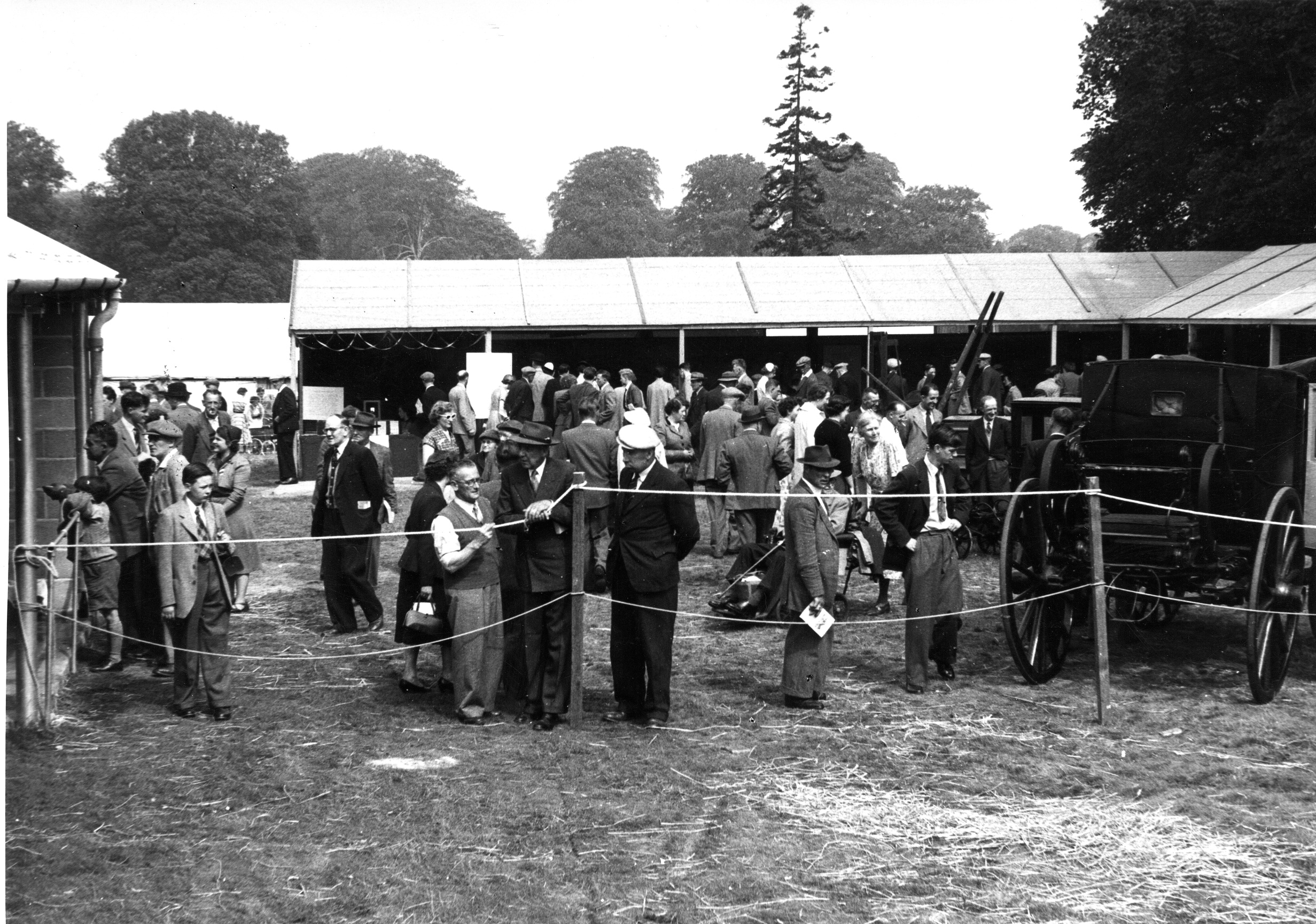A snap chat about new photos of country shows

The next exciting instalment of our current Land and Folk seminar series brings the story of photographer Arnhel de Serra’s ongoing project, The Country Show, to The MERL for the very first time (see here for details). This body of work has been over a decade in the making and is the result of his explorations of the quirky humour and unexpected variation within the quintessentially British world of the country show.

In the English context, country shows reach back at least to the period of agricultural improvement, when prominent pioneers of new forms of cultivation and livestock husbandry would gather to share ideas. These early events were structured occasions, during which land owners mingled with farm workers, if not as equals then as people with a shared passion for farming. Perhaps the best known early example was the Woburn Sheep Shearing, an event first held in 1804 on the estate of the Duke of Bedford. Just as Arnhel’s photographs form a visual record of today’s events, this gathering was depicted for posterity by the artist George Garrard. You can see a sculpture of a bull made by Garrard on display at the Museum.
Garrard’s painting was reproduced in printed form in 1811 and, echoing the ‘absolute unit’ animal imagery of the eighteenth and nineteenth centuries, copies of it spread rapidly. Because of this it offers a variety of ways to interpret and better understand the social hierarchies of rural England at this time. Indeed, one regular user of our Reading Room, University of Reading PhD student Hilary Matthews, has been uncovering and recording details of just some of the people portrayed in Garrard’s image. Suffice to say, these were complex contexts, much as country shows are to this day.

Country shows grew in popularity during the nineteenth century. National forms emerged such as the Royal Agricultural Show, which was first held in Oxford in 1839. The MERL itself regularly participated in this event throughout the 1950s, offering on its stand at the Royal Show in Nottingham in 1955 a period reconstruction of the inaugural 1839 Show. Museum staff dressed up in elegant dresses and in top hats and tails and were, by any account, far tidier than their modern-day equivalents. Curators used such engagements as an opportunity to grow awareness of their collecting activity, to raise the profile of the Museum and its endeavours, to solicit donations to support its work (we may be scruffier but we still do this!), and to gather objects for the rapidly expanding collection. In recent decades, we have revived this tradition, participating as we do in the annual Berkshire Show held at Newbury showground.

The Berkshire Show is just one of the many such country shows that Arnhel has recorded for posterity through his extraordinary project. His images are as amusing and conflicted as they are powerful and important, offering a lens onto our shared humanity and a route into understanding these enormously popular gatherings. In the forthcoming seminar, Arnhel will discuss his work with Bee Farrell, a cultural anthropologist and writer whose interests lie in the ways in which we both create and share the experience of special events like these. Bee is not a newcomer to The MERL as she was involved in bringing the striking photography of Justin Partyk’s Fieldwork to the Museum some years ago. The methods and ideas of anthropology go some way to uniting all these different approaches. Indeed, much like the salvage anthropology evident in The MERL’s attendance at country shows in the 1950s and arguably in its ongoing participatory attempts to engage with rural people and communities, Arnhel’s photography records these worlds from the perspective of a participant-observer. he is, in essence, both artist and subject. Show-goer and show artist. This brings us neatly back to Garrard, who famously included his own likeness in the bottom-left-hand corner of the Woburn Sheep Shearing. Scroll up and take a look. He’s sitting alongside one of his model bulls.
Do join us for the Seminar and watch this space for future collaborations with Bee, Arnhel, Hilary and others!
